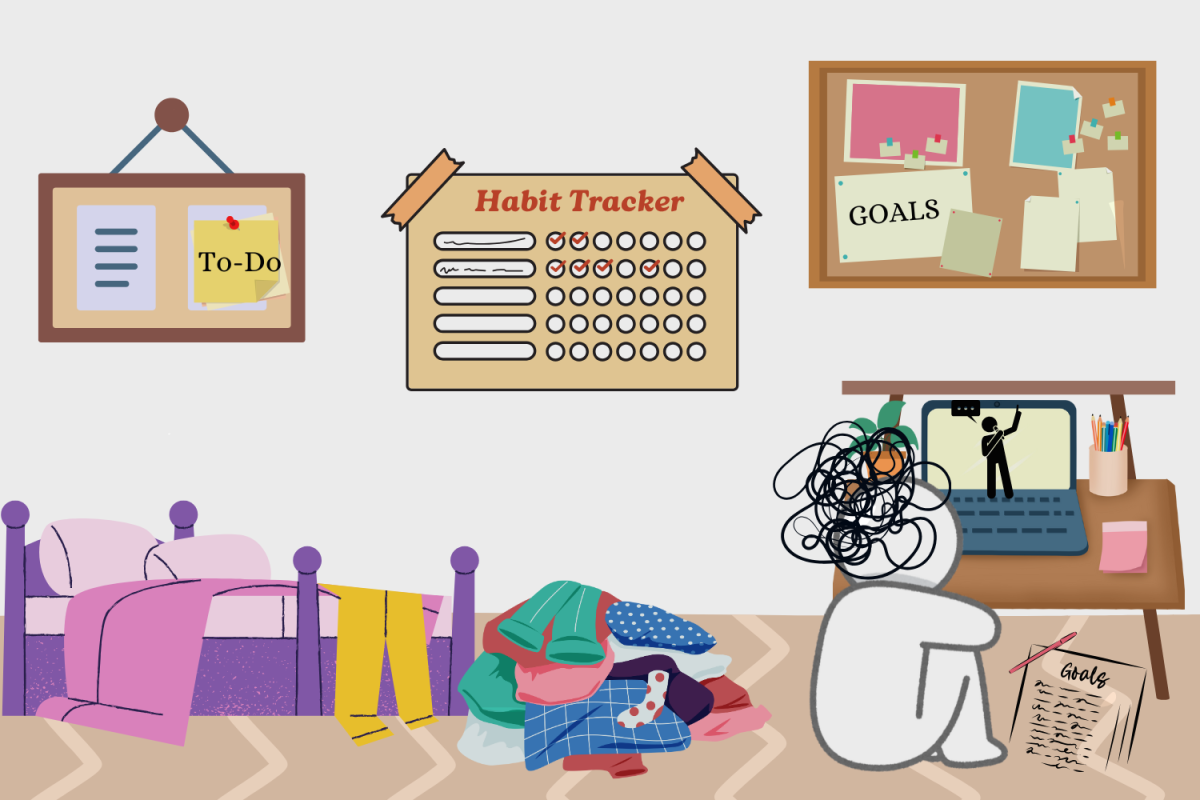Have you ever found yourself just lounging around and doing absolutely nothing? Even though you have a whole list of tasks you could be completing, for some reason you can’t just get up and get started. You decide to watch a video of someone doing their homework, hoping that it can inspire you to get started on your own. Somehow this video suddenly makes you want to start your own homework, but this feeling of motivation only lasts for a few minutes until you’re back in the procrastination slump you were just in. Which brings the question, why don’t these motivational videos keep people motivated?
A person’s motivation comes in four forms: extrinsic, intrinsic, introjected, and identified motivation. Many people with an internal motivation—like intrinsic or introjected—may find that watching motivational videos boost their motivation a lot more. This is because most internal motivations are driven by an individual’s internal goals: intrinsic motivation including someone completing their goal in order to maintain their pride, whereas introjected motivation stemming from the feeling of being pressured to succeed. Therefore, if a person believes that watching “study with me” videos or a motivational video will get them feeling productive and starting work, so they’ll turn on that YouTube video.
On the other hand, external motivations are the complete opposite of internal. For example, an extrinsic motivation is when someone’s desire to act is driven by an external force, like a reward or punishment. Identified motivation is when a person has an understanding or feeling that something needs to be done. This type of motivation prepares a person to act; it’s the “building process” to one’s action.
Each of these types of motivation help a person achieve their desired task to be completed, but oftentimes procrastination restricts productivity.
Procrastination is what stops people from achieving their goals or completing their tasks. Many people procrastinate on work that they dread to start on or a task that seems too much of a burden to start. Some people would call this being lazy, but this lack of motivation could just be a person’s way of protecting themself from failure. Procrastination is not always just caused by a person’s laziness.
Motivational videos are used to inspire and help people become more driven than they were before, but they give people a false sense of productivity. They give the viewer a sudden urge to want to complete their long list of tasks. However, the reality is that most people end up just binge-watching one inspirational video after another, stuck in an endless loop of watching videos and not getting any work done.
All these motivational videos inspire a viewer to get started on something that needs to be completed, but what these videos fail to do is give viewers a way to sustain this feeling of wanting to work. With watching these types of videos, a person’s desire to continue working is cut short and leaves the viewer feeling disappointed that they weren’t productive enough to finish their tasks. It’s common sense that motivational videos can’t complete a person’s tasks since they can’t control viewers’ actions. It’s not a magical video that’ll complete all our goals, so why should we expect it to keep our productivity levels up if they don’t control our actions?
A person’s productivity shouldn’t rely on watching someone else complete their own set of tasks. People should know how to motivate themselves by setting goals and taking accountability to complete a task that is needed. One way to stay motivated to keep working is by eliminating all distractions nearby; this could be like silencing your phone, being in a quiet workspace, and even exiting out of tabs you know can be distracting. Another way is to make sure you take breaks when working. Though it might seem like a waste of time, taking breaks actually helps a person replenish their energy and motivation to keep working, but make sure to keep these breaks to a maximum of 40 minutes. There are many different ways you can motivate yourself or stay motivated; so use all these strategies first, instead of jumping straight into watching a video.







